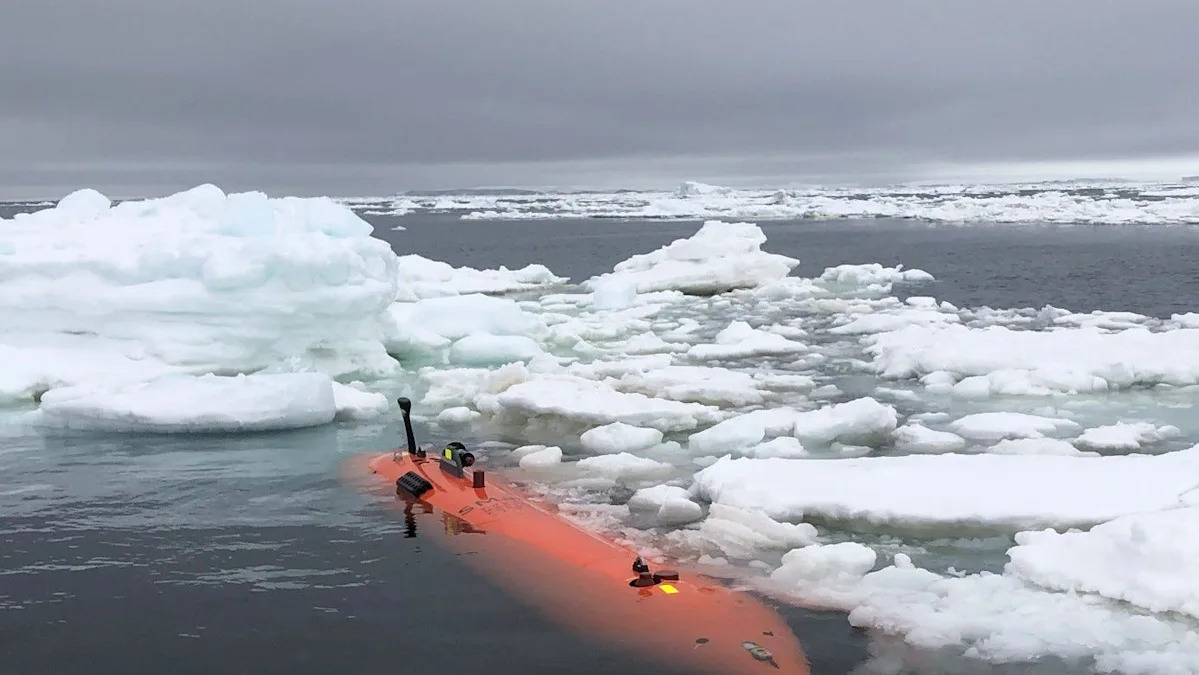Antarctic Submersible Unveils Secrets, Then Disappears

WEST ANTARCTICA – An international team of scientists faced a significant setback in their exploration of the Dotson Ice Shelf after their autonomous underwater vehicle (AUV), named “Ran,” vanished beneath the icy waters. This disappearance occurred during a mission to catalog changes in the ice shelf’s structure, crucial for understanding climate change impacts.
Breaking: Submersible Vanishes After Discovering Ice Shelf Secrets
In 2022, researchers deployed the 20-foot-long AUV “Ran” to explore the uncharted regions beneath the Dotson Ice Shelf in West Antarctica. The mission aimed to investigate the dynamics contributing to the accelerated melting of the ice shelf’s western and eastern sections. The initial findings, published in Science Advances, revealed significant differences in the melting rates and structural features between these sections.
Immediate Impact
Upon returning to the Antarctic in 2024, the team sought to examine changes observed since their last mission. However, “Ran” failed to surface at the designated rendezvous point, leaving scientists without the anticipated data needed to further their research.
Key Details Emerge
The AUV “Ran” embarked on a 27-day mission, traveling over 600 miles, including a 10-mile journey into the ice shelf cavity. The submersible utilized advanced sonar technology to map the ice’s underside, revealing complex erosion patterns and unusual formations.
“By navigating the submersible into the cavity, we were able to get high-resolution maps of the ice underside. It’s a bit like seeing the back of the Moon,” said Anna Wåhlin, lead author of the study.
Expert Analysis
Anna Wåhlin and her team discovered that the varying melt rates could be attributed to the modified Circumpolar Deep Water (mCDW) phenomenon. This involves the mixing of Pacific and Indian Ocean waters with local masses, affecting the ice base. Despite the loss of “Ran,” the data collected offered new insights into glacier melting patterns.
Industry Response
The submersible’s disappearance underscores the challenges faced by scientists working in extreme environments. The International Thwaites Glacier Collaboration (ITGC), responsible for the mission, expressed the need for continued exploration to understand the implications of climate change on Antarctic ice.
By the Numbers
- 600 miles traveled by “Ran” during its mission
- 50 square miles of ice mapped
- 27 days of underwater exploration
What Comes Next
The ITGC plans to replace the lost submersible and resume its critical research. Understanding the dynamics of ice shelves is vital for predicting future sea-level rise and climate change impacts.
“Although we got valuable data back, we did not get all we had hoped for. This research is needed to understand the future of Antarctica’s ice sheet,” Wåhlin stated.
The scientific community remains hopeful that future missions will yield further insights into the complex interactions between ocean currents and ice shelf stability, essential for global climate models.





